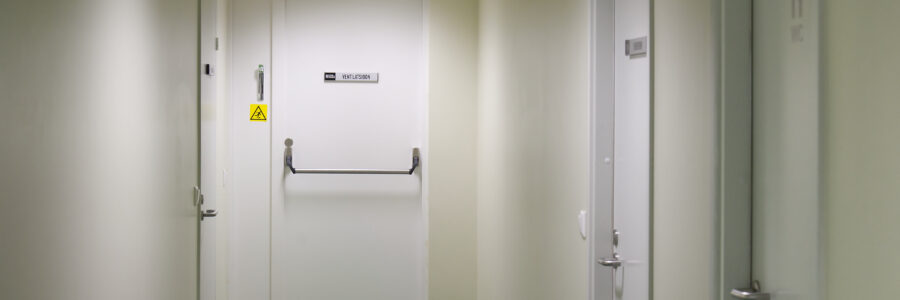What Is A Notional Fire Door?
Fire doors are a legal and mandatory requirement in all commercial and many residential buildings. There have been though, over the years, many different standards to which these fire doors were manufactured and installed, and in many buildings, the fire doors that were originally installed would not meet today’s more stringent standards for quality, materials and protection. All modern fire doors must be fire resistant to a specified standard and offer the protection and resistance required for all occupants to successfully evacuate a building in the event of a fire outbreak.
In buildings with older doors, that may have met earlier standards of manufacture and legislation, they may not be deemed fit-for-purpose by today’s requirements, so will need to be identified and, where necessary, upgraded or replaced! These older doors are classified as ‘nominal’, or ‘notional’, fire doors and they must be checked thoroughly against the most recent requirements and standards. Inspections of these doors that reveal any visible fault or damage, excessive ‘wear and tear’, or any unprotected or unsealed gaps, must be repaired or the door replaced immediately. Here is some information as how to recognise these notional fire doors within your building:
Notional Fire Doors
Just because a fire door is old, and was installed before the modern regulations and standards were imposed, does not automatically mean that they are no longer fit-for-purpose – they may well still be in a condition that is sufficient to offer the fire protection for which they were intended but, what it will mean though, is that they will not be fully certified to today’s legislative requirements, and so must be fully maintained and regularly checked for integrity as you would with a modern fire door.
One of the biggest issues with these notional fire doors is that they may not have been manufactured, or fitted with, the important intumescent smoke seals or strips – these are a vital part of a fire doors protection as these are the elements that prevent the spread of potentially fatal smoke from one room or space to any adjoining area. They work by responding to extreme heat which when exposed to, these strips rapidly expand and seal any gaps under and around the door.
If any of these notional fire doors are warped or have exposed gaps of greater than an inch or 25mm, they may need to be replaced. A full risk assessment should be performed on any of these doors against a checklist of safety features and performance measures. It is worth noting that if any older, notional fire door does need replacing, it MUST be substituted with a modern, fully tested and certified fire door that meets all the current legislations.
Certification
As stated earlier, all modern fire doors are manufactured and certificated to specific standards, and this certification is displayed on all fire doors installed in a building as a legal requirement. As this certification is achieved through the rigorous testing by an accredited, third-party testing unit that issues formal approval upon completion of the testing, then notional fire doors will not have this certification.
The only way a notional fire door can be granted this certification is for the door to be manually removed from its situation and sent to a nominated third-party facility to undergo the testing – a process expensive to undertake and with the likelihood that the door will not survive the rigorous process – it would more likely make sense to just replace the door with a modern pre-certificated door instead!
You can, however, self-certify a notional fire door in situation with an examination from an accredited third-party contractor -whilst these accreditations will not guarantee the overall fire performance of the door, they will provide some assurance of the materials used and confirmation that the doors have been correctly installed and maintained.
Identifying A Fire Door
The appearance of doors in a building may not always be obvious as to which are certified fire doors and which are notional fire doors, but there are easy ways to distinguish between the two types. Modern pre-certificated fire doors will have displayed all the relevant certification labels containing information on the door-type and the fire resistance rating which will identify them as such.
Each fire door will have been tested and awarded a specific resistance rating based on the minimum time period for which they will retain all the harmful elements of a fire outbreak. A fire door that will offer this protection for a minimum of 30 minutes will be rated as an FD30 fire door – a door that offers the same resistance, but for a minimum time of 60 minutes is rated as an FD60 fire door, an FD90 fire door for 90 minutes and so on. Modern fire doors will be fitted with intumescent seals and some with automatic closing devices which also help identify them.
Summary
A notional fire door is, by definition, a fire door that satisfied the standard that was applicable to fire resistance at the time the building was constructed. If your building has these doors installed, it is imperative that they be reviewed and subjected to a fire risk assessment, and any recommendations for repair or replacement actioned immediately.









